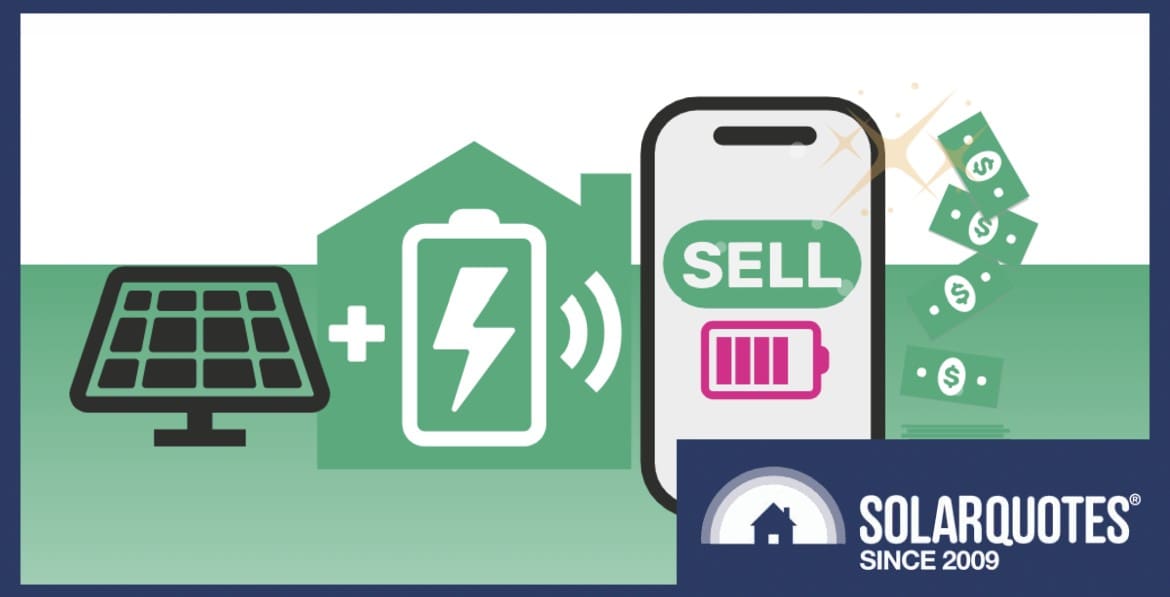
Image: GloBird
Update 24th Feb 2025: I mistakenly wrote that the Globird Zerohero VPP allows a household to use up to 0.3kWh of grid electricity during the two hour Zerohero peak and still receive a $1 credit. But the actual figure GloBird gives is 0.03kWh per hour. This makes for a total of 0.06kWh over the two hour period. This figure is low and has the potential to make it difficult for battery households to claim the $1 credit because it’s normal for battery households to still draw a small amount of power from the grid even if they never exceed their battery’s continuous power output. I called GloBird but wasn’t able to talk to anyone who knew details about the VPP. I have sent them an email and, hopefully, they will respond to it. Until I get clarification from Glowbird, I can’t recommend using their Zerohero VPP as it may be difficult for households to take advantage of one of its major benefits.
Update 3rd March 2025: GloBird have responded and said, for the batteries they have tested, households are able to get through the two hour Zerohero evening peak without exceeding the 0.03kWh per hour grid electricity consumption limit, so are able to receive the $1 credit. They also sent some bill information on four households showing this. However, this information was all from summer when small amounts of solar generation during the peak period could have helped the households avoid the 0.03kWh per hour limit. Until we receive information showing homes can receive the $1 Zerohero credit outside of summer, I recommend assuming you won’t get it any time your solar system isn’t producing a small amount of energy during the second half of the Zerohero evening peak. I have placed the bill information at the end of the post.
I’ve looked into the pros and cons of a range of Virtual Power Plants, and so far, I haven’t been impressed. But GloBird Energy’s Zerohero VPP stands out as the best of a bad bunch. Rather than providing inadequately meagre payments — so long as you have a suitable battery and electricity consumption patterns — its payments have the potential to be adequately meagre.
Another advantage is you’re always in charge of discharging the battery to the grid. Globird will never drain your battery without permission. This is important because one thing widely disliked about VPPs is having to hand over control of the battery you paid for to a faceless organisation — or worse — one with Elon Musk’s face.
The GloBird Zerohero VPP can be particularly useful for homes with smaller solar systems because it provides three hours of free electricity in the middle of the day and this can be used to charge your battery. But because its solar feed-in tariff isn’t great, it may not suit homes with large solar systems that normally export a lot during the day.
I’ll give details below, but you can go to GloBird’s Zerohero page and also check out its terms and conditions if you’d like information straight from the horse’s esophagus. Because it compares well to the competition — take a look at our recently updated VPP comparison table to check for yourself — if you’re looking to join a VPP you may want to give Globird Zerohero a go, provided it’s available in your area.
How To Join
The Globird Zerohero VPP is available in NSW, SA, SE QLD’s Energex area, and VIC. That’s potentially 21.5 million Australians out of 27 million, which isn’t bad.
If you’re a renter, you can join the VPP, but your home will need a suitable solar and battery system.
To join Zerohero you will need:
- A solar system of 3–15kW;
- A home battery with 3–35kWh of storage capacity that is an AlphaESS, Redback, SolaX, Sungrow, Sigenergy, or Tesla Powerwall;
- The battery’s continuous power output must be 3–15kW;
- A reliable internet connection.
No additional hardware is required, as the above battery systems are good to go. But GloBird says you may need to give them the battery’s serial number.
What You Get
There are four ways you can get money out of Zerohero. Three incentives have stupid “zero” names, and they forgot to come up with a silly term for the fourth one:
- Free midday electricity (Zerocharge): Grid electricity is free for 3 hours a day between 11am–2pm. This includes charging your battery. The exception is anything that’s on a controlled load because they are separately metered.
- $1 For zero grid electricity use during a 2 hour evening peak (Zerohero): In QLD this 2 hour peak is between 5pm-7pm. Everywhere else it’s either 5pm-7pm or 6pm-8pm during daylight savings time.
- 15c feed-in tariff for first 10kWh exported during the 2 hour evening peak (Zerowastedsolar): In winter these peak period exports would have to come from your battery, but in summer some could come from solar.
- $1 per kWh exported to grid during critical peaks (Zero stupid name): Globird can designate certain periods as “critical peaks” and will pay $1 for every kWh exported to the grid during these times. These critical peaks will happen when wholesale electricity prices are expected to be exceptionally high, but Globird gives no information on how often they’ll occur. They could be once in a blue moon or once in a big round whitish grey moon — which would be once a month.
Here’s a graphic showing when the three daily benefits occur — outside of daylight savings:
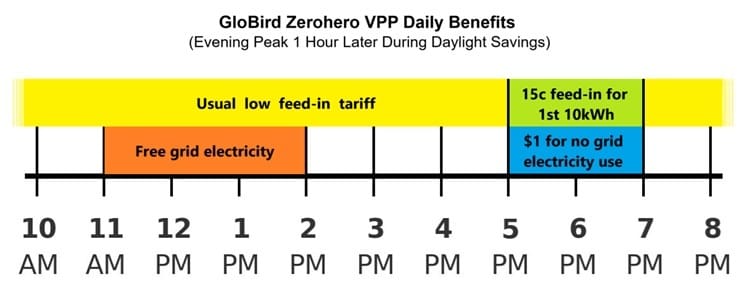
A feed-in tariff is available 24 hours a day, but unless you discharge your battery to the grid you won’t be getting anything at night.
I knocked the above image together this morning because I couldn’t sleep. Despite using ancient software, it still looks better than the horrible graphic GloBird has on their page, which looks like two bacteria exchanging DNA or something.
I hope GloBird steals this.
Low Normal Feed-in Tariff
A problem with many VPPs is their normal solar feed-in tariff usually isn’t great. If I said Zerohero is an exception, that would be a complete lie. It varies by location but can be painfully low. This won’t be a big problem if you have a smaller solar system that often struggles to keep your battery charged, because you won’t export much anyway. But if you have a big solar system — or it’s just medium-sized and there’s no one home during the day — missing out on a higher feed-in tariff could cost you hundreds of dollars per year.
Update 26th Feb 2025: It has kindly been pointed out to me in the comments that I made a mistake with the plans’ electricity charges and feed-in tariff values. I’ve corrected them so they’re now the current values on the GloBird site. Further corrections made on 21st March 2025.
The feed-in tariff amounts depend on location and vary based on the time of day:
- NSW feed-in rates: 10am-2pm 1c, 4pm-9pm 9c, all other times 5c
- SA feed-in rates: 10am-2pm 0.1c, 4pm-9pm 9c, all other times 3.5c
- SE QLD Energex area feed-in rates: 10am-2pm 0.5c, 4pm-9pm 9c, all other times 4c
- VIC feed-in rates: 10am-2pm 2.1c, 4pm-9pm 9c, all other times 4.1c
The feed-in rates are lowest in the middle of the when rooftop solar produces the most energy, so don’t expect the average you recieve to be much higher than the low middle of the day rate.
In addition to the solar feed-in tariff rates shown above, there’s also a 15c feed-in rate for the first 10kWh exported to the grid during the two hour Zerohero peak in the evening. Because solar output at this time will either be zero or very low, this will normally have to be discharged from your battery.
Because the average feed-in tariff received for solar exports won’t be very high, if you have a large solar system that normally exports a lot of electricity, then Globird VPP is probably not for you. This will be especially true in SA.
How Much Will A Low Feed-in Tariff Cost Me?
If you have a 10kW solar system generating an average of 40kWh of clean solar electricity per day and you export half of that to the grid, then if you can get a solar feed-in tariff that’s 3 cents higher than the average feed-in tariff you get from Zerohero, then you’d receive $219 more feed-in tariff per year. On the other hand you’d miss out on the benefits, so you’ll have to weigh up the pros and cons.
Grid Electricity Charges Aren’t Bad
What you pay for grid electricity on Zerohero varies by state and electricity distributor. In general, the charges aren’t unreasonable compared to what other retailers currently offer. But if you have solar and a battery — and you get to charge that battery for free in the middle of the day if necessary — then you shouldn’t need to buy much grid electricity. This means, whether the grid rate is high or low, it shouldn’t make much difference for many users. But if you expect to use a significant amount of grid electricity, you’ll need to take its cost into account.
Here’s what you’ll pay in the 10 Distributed Network Service Provider (DNSP) areas where the Zerohero VPP is available:
- NSW Ausgrid area — Daily supply charge: 113.3c, Per kWh charge 11am-2pm 0c, 3pm-9pm 38.5c, all other times 28.05c
- NSW Endeavour area — Daily supply charge: 128.7c, Per kWh charge 11am-2pm 0c, 3pm-9pm 46.2c, all other times 30.8c
- NSW Essentials area — Daily supply charge: 196.9c, Per kWh charge 11am-2pm 0c, 3pm-9pm 47.3c, all other times 34.1c
- SA SAPN — Daily supply charge: 196.9c, Per kWh charge 11am-2pm 0c, 3pm-9pm 47.3c, all other times 34.1c
- SE QLD Energex — Daily supply charge $1.34.2, Per kWh charge 11am-2pm 0c, 3pm-9pm 42.9c, all other times 28.6c
- VIC Ausnet — Daily supply charge: 123.2c, Per kWh charge 11am-2pm 0c, 3pm-9pm 42.9c, all other times 23.65c
- VIC Powercor — Daily supply charge: 122.1c, Per kWh charge 11am-2pm 0c, 3pm-9pm 36.85c, all other times 23.1c
- VIC Jemena — Daily supply charge: 113.3c, Per kWh charge 11am-2pm 0c, 3pm-9pm 35.2c, all other times 22.55c
- VIC United Energy — Daily supply charge: 102.3c, Per kWh charge 11am-2pm 0c, 3pm-9pm 35.2c, all other times 22c
- VIC Citipower — Daily supply charge: 110c, Per kWh charge 11am-2pm 0c, 3pm-9pm 31.9c, all other times 19.8c
The highest electricity charges are in SA and the rural NSW Essentials area, while the cheapest are in the Melbourne Citipower area.
$1 For *Almost* No Grid Usage In 2 Hour Evening Peak
Update 24th Feb: I gave the wrong figure below and I apologise for my mistake. The actual amount of grid energy that can be drawn during the 2 hour Zerohero peak is 0.03kWh per hour for a total of 0.06kWh. This figure is very low and may make it difficult for households to get the $1 credit.
If you use no grid electricity during the two-hour Zerohero evening peak you get paid $1. I say no grid electricity, but you’re actually allowed to use up to 0.3kWh. This is important because home batteries usually won’t discharge until the home is drawing around 100 watts or more. So you’ll usually use around 0.2kWh over a two-hour period even if never draw more power than your battery can supply.
Being allowed to use up to 0.3kWh of grid electricity gives a little wriggle room if you briefly draw more power than your battery can provide — but I don’t recommend relying on it.
How Realistic Is No Grid Power For 2 Hours?
Most home batteries provide 5kw of continuous power, which means most battery households will have no problem not using grid electricity for two hours in the evening. Especially if you’ve taken the sensible step of shifting loads such as electric hot water systems to the free period in the middle of the day. Heating or cooling your home to a comfortable temperature before the start of the peak period is also an option.
But let me tell you, if you have an electric stove and my father is cooking for you during the Zerohero peak, you’re not getting your $1. Not with a battery that has a power output of 5kW. He’ll use every hotplate, turn on the oven, plug in an electric wok and an electric frypan, run the microwave, and leave your fridge door open. Even if you have something like a Tesla Powerwall 3 that can provide a continuous 10kW of power he’ll probably find a way to exceed it. It’s not intentional, he’s just cursed1 when it comes to electricity consumption.
You probably already have a good idea if your household is likely to collect those daily $1 bonuses. To improve your odds, you may be tempted to set your battery so it only starts to discharge one minute before the Zerohero peak begins. But this could end up costing you money if it causes you to use grid electricity before the start of the peak and you end up with unused energy in your battery once it starts charging from solar the next morning.
You can also set the battery to discharge during the evening peak to get a 15c feed-in tariff for the first 10kWh exported. But you’ll want to make sure you leave enough energy in the battery to meet your late-night and early-morning electricity use. This is because you’ll always save more money using battery energy to avoid grid electricity consumption than discharging it to the grid for 15c.
You Are In Control Of Discharging — But Will You?
The GloBird VPP doesn’t have control over your battery and can’t discharge it to the grid. You’re in charge of discharge. For this reason, you can argue Globird Zerohero isn’t actually a VPP and is simply a retail electricity plan for battery homes. But I say it’s a VPP and since I just voted myself VPP President, what I say goes. If you disagree with me, as far as I’m concerned, you can go jump in the Gulf of Virtual Power Plant.
The drawback of being in complete control of your battery is that if you want to make money from discharging it, you have to actually get around to doing it. GloBird helps out by providing information on how to set your battery to discharge automatically. But if you want to take advantage of the higher $1 per kWh payments for discharging during critical peaks, you’ll have to set that manually each time.
Some people will be happy to do this. But a lot of people simply won’t get around to it. You probably have a good idea which type of person you are. But, even if you never discharge to the grid, it can still be worthwhile to join Zerohero.
No Lock-in — You Can Leave Anytime
GloBird Zerohero doesn’t lock you in with a contract, so you’re free to leave anytime you like. The drawback is Globird is free to change their terms & conditions anytime and apply them soon after informing you. This means there’s no guarantee that benefits won’t be reduced in the future.
How Useful Is 3 Hours Free Electricity?
Three hours of free grid electricity from 11am-2pm is handy to have. You can set your battery to charge from both solar and the grid during the free period and also set electric hot water systems and other appliances to switch on at this time. If you often have an EV that’s parked at home in the middle of the day, you may never pay to charge it for normal day-to-day use again.
But you may not save as much money as you think. If you have a decent-sized solar system, then most days you should be using no grid electricity in the middle of the day anyway. The greatest benefit will be for people with smaller solar systems who can have trouble fully charging their batteries in winter or periods of cloudy weather.
You can join the Zerohero VPP with just 3kW of solar. This makes it great for those with limited roof space. But if you have a big roof, I don’t recommend installing a small solar system and then hoping you can join a VPP like Zerohero that can make up for it. Larger solar systems don’t cost a lot more and you’re in a much stronger position if you’re producing plenty of your own clean energy. This is especially true if there’s a grid failure and you have to rely on only your solar and battery.
But watch out for controlled loads. Because they’re metered separately, you still have to pay for their electricity use during the free period. If you’re going on Zerohero it’s probably best to get rid of controlled loads, even if the appliance needs to run for more than three hours a day.
If you’re determined to work out how much you might save and you have a smart meter, you can get your retailer to send you a file of your past electricity consumption, broken down by time. (You can also use this file in our Battery Calculator to estimate the savings from getting a battery.) Alternatively, you could just read your meter around 11am and 2pm for a while to get an idea of how much grid electricity you use in the middle of the day. This is your only real option if you don’t have a smart meter, but note you will need one to join a VPP.
Having a period of free electricity is good, but if you have a larger solar system and don’t have an EV parked at home during the day, it won’t save you a lot of money. For many solar households, it’s likely to average around a dollar or less per week.
How Much Can You Save?
Provided the plan suits you, the total you can earn from Zerohero can add up to a decent amount compared to other VPPs. However, I’m not including electricity plans that let you buy and sell electricity at wholesale prices, such as Amber, in this comparison. While they could let you make more money, because you can also lose money, I only recommend them for people who know what they’re doing and have the right battery setup. Zerohero is a less stressful way to — hopefully — make some money without ever discharging your battery to the grid if you don’t want to.
If you’re able to consistently avoid using grid electricity during the two-hour Zerohero peak then your $1 payment will mount up. If you can pull it off on average for six days a week, then that will come to over $300 per year.
Having three hours of free electricity in the middle of the day also lets you save money. For homes with small solar systems it could be hundreds of dollars annually, but not much at all for homes with large solar systems. If you have a 6.6kW solar system you’re not likely to save a lot and if you have a 10kW system you’ll tend to save even less.
If you do discharge your battery to the grid, you can make some extra money, but I wouldn’t count on making much.
It will only make sense to discharge to the grid during the Zerohero peak to chase the 15c per kWh for the first 10kWh if you regularly fail to consume all the energy in your battery overnight, as you save more than 15c by using your stored energy to avoid using grid electricity. Some may not even consider the extra wear and tear on their battery to be worth 15c.
There are payments of $1 per kWh discharged to the grid during critical peaks, but it’s not known how often these will occur, so they can’t be relied on. You’ll also need to be motivated enough to set your battery to take advantage of them once you receive a notification. Because discharging your battery during a critical peak is likely to increase your grid electricity consumption, what you actually make will normally average less than $1 per kWh. While you may be able to make a lot more than $30 per year from discharging during critical peaks, I’d say don’t count on making more until we get good information from GloBird on how often they occur.
On the downside, you will receive a lower solar feed-in tariff than what’s available with a non-VPP electricity plan. If you have a large solar system this could make Zerohero a big zero.
More Pro Than Con For Most
Whether or not it makes sense for you to join the GloBird Zerohero VPP will come down to weighing up the cost and benefits. But even if all you do is get $1 six days a week from not using grid electricity during the Zerohero evening peak, you’ll still come out ahead of most VPPs that we’ve compared.
So while I’m not yet ready to give any VPP my seal of approval, I am happy to give GloBird Zerohero my seal of mild optimism that it’s the best VPP option currently available for many households.
Appendix: GloBird Provided Bill Examples
Update 3rd March 2025: After this post was published Globird provided me with some bill information from users of the Zerohero VPP. I’ve put it below as examples of how it may work for you — in summer. Note these are not random samples but were provided by GloBird. They also only cover four weeks in summer when solar output is high. This makes it easier for bills to be in credit because high solar generation results in more feed-in tariff being received. It also allows some solar generation during the 2 hour evening Zerohero peak which could have allowed the households to avoid exceeding the very low 0.06kWh grid electricity consumption limit that can’t be exceeded to receive a $1 credit. The batteries used consisted of two 13.5 kWh Tesla Powerwalls, a 10.1kWh Alpha ESS, and a 16 kWh Sungrow.
The first piece of billing information is for a home in Victoria with a Tesla Powerwall, which has 13.5kWh of storage:
The next is for a 10.1kWh Alpha ESS battery in Victoria:
This is for a 16kWh Sungrow battery in Queensland:
Finally, another Tesla Powerwall, but this time in South Australia:
Footnotes
- No particular reason. The Dutch are simply an accursed people. The Flying Dutchman didn’t make a deal with the devil to get around Cape Hope. He was just Dutch. ↩

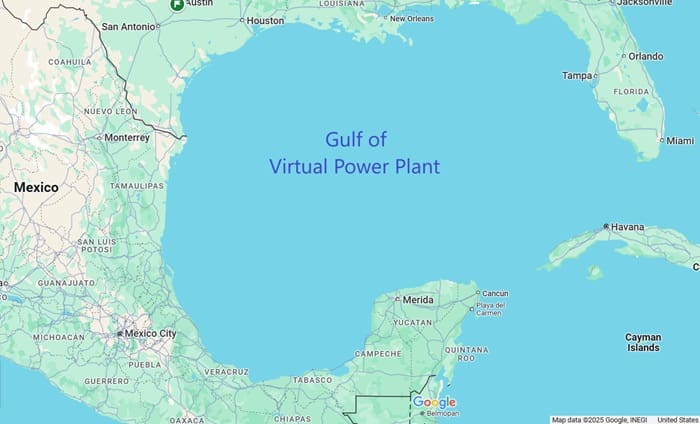
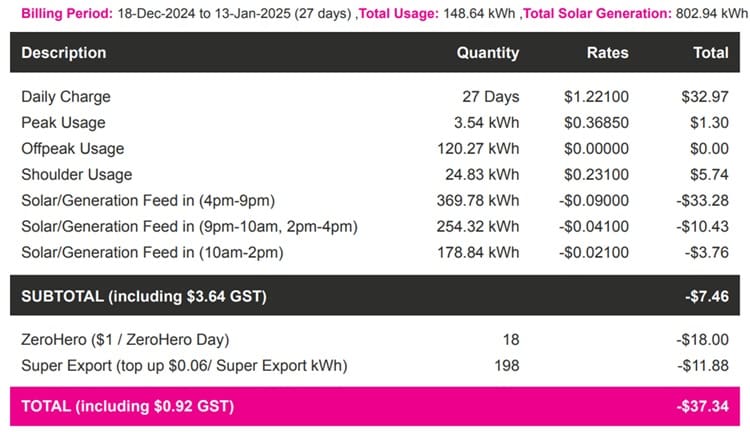
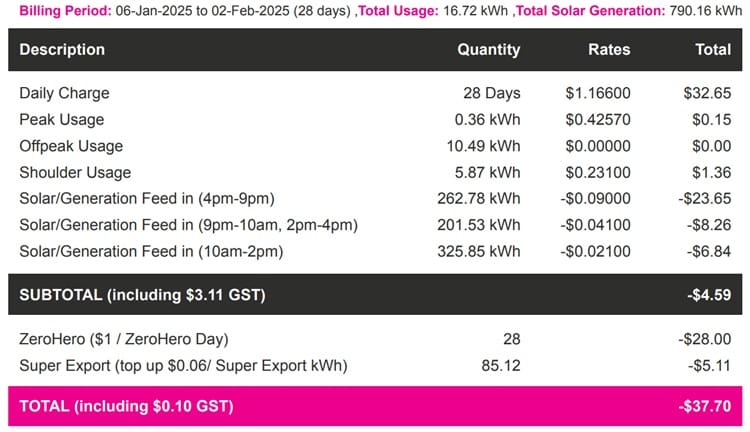
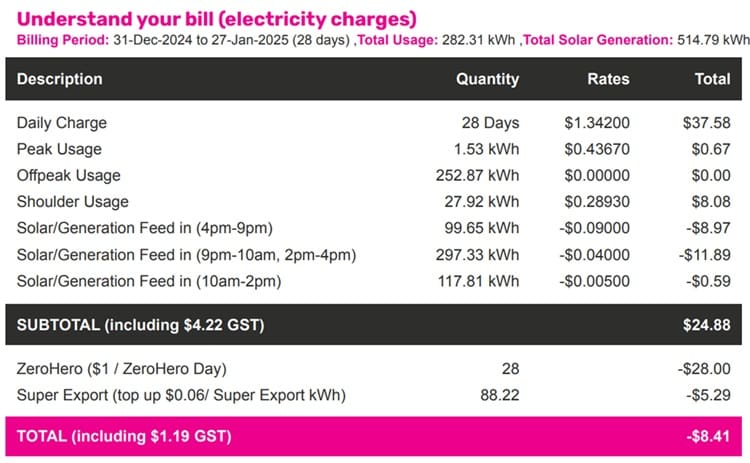
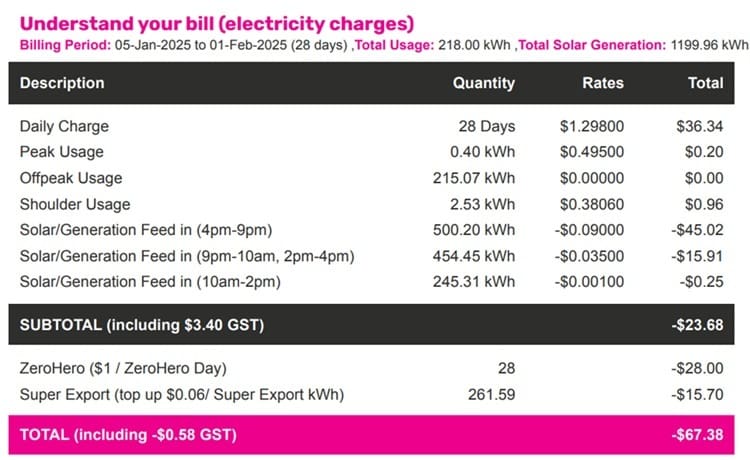
 RSS - Posts
RSS - Posts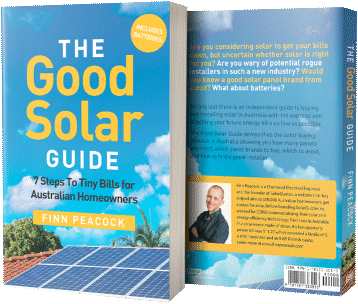


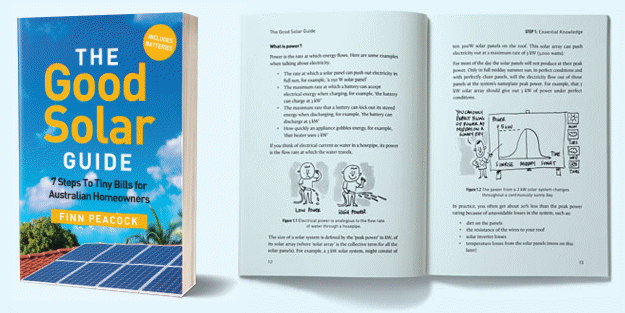
This is considered the best of a bad bunch, and still your likely to do not much better than pay for your daily connection fee?. Hardly seems worth flogging your battery by joining a VPP does it?.
You’re not flogging the battery unless you decide to flog it as you’re in charge of discharging to the grid — a big plus. So more pro than con for many, although for some the con of losing out on a decent feed-in tariff will be too large for it to be worthwhile.
Ronald, In your new role as VPP President maybe you could make a decree to get Western Power to allow Globird to operate in WA.
As you say with the offered plan many users will be able to offset the $1 for no evening usage against the daily connection fee which would be a significant offset as well as charge their batteries in winter at midday. I might even switch to restive heated energy storage with free charging during the day.
Last point I did read the Globird web site but saw no mention of 3 phase systems but I guess they must be ok with them as they talk about 15kW output batteries
Hi Ian,
I’ve just spoken to pResident Brakels and if you’d like to buy some digital currency, gold sneakers or trading cards we’ll see what we can do for you, which probably won’t be much but it’s the thoughts and prayers that count isn’t it?
I would move to an EV and electric hot water before resistive heating.
As far as I know most of the sand gropers would settle for more connection capacity, as the 5kW/phase allowed by Synergy/Western Power is draconian.
Ian, I’d love to use my new position as VPP President to help a range of VPPs operate in WA, but at the moment I’m afraid I’m too busy soliciting bribes.
With a 4.8kW system this would be handy (if I had a battery) here in Vic as I use all my output in winter and could do with a boost. I thought an EV with V2H would be better for this than a battery. I like Globird as a retailer and sometimes find their plans good but it always takes some napkin scratching to work out the sums.
Thanks Ronald for another informative and entertaining article.
Have you written an article for people in rural areas who suffer a lot of blackouts about how to balance the need to keep enough juice in the battery to get through a blackout with the desire to use the battery to reduce bills and put more renewable energy into the grid? If not, could you please?
Thanks again, Andy
Thank you Andy. I suppose I could write something like that at some point, although Anthony might do a better job. For now I’ll just say go big on solar and reassure you that batteries will get cheaper.
Thanks again Mr President,
Another part of said article could be for EV owners with V2H/V2G on how to balance the need to keep enough juice in the car battery for driving purposes with the desire to use the battery for running the home or exporting to the grid during periods of high demand/high prices.
Perhaps you could pass this on to Anthony for me.
Cheers, Andy
Hi Andy,
I’m sure that EVs with V2L have a state of charge cutoff so you’re not left stranded. I seem to recall someone mentioning 20% but I’m not sure if it’s adjustable or there’s an alarm perhaps? That would vary from one model to the next I expect.
Wonder what the theoretical max you could pull during that free electricity period is. Three phase max total amps is 189 amps? So that’s ~45kw? Over three hours ~136kw… If only batteries has this much capacity and we’re dirt cheap 😂.
Main breaker amps will start to be an issue. People are already implementing dynamic load control so they can charge as much as possible without tripping the main breaker which could be 40A, 63A, or 100A.
Personally, I feel when you almost need an economics degree, and / or be a spreadsheet whizz, coupled with modern living time demands, it’s just getting too hard for most consumers to get their heads around and keep up with power co changes.
If you have a good solar and battery setup, I’d just go with a power retailer who has the best plan / tariffs that suits your setup and usage, and just be self sufficient for pretty much all your bills.
What tiny, diminishing, FIT you get now can to help cover supply charges, but these will disappear in the coming year or two, that’s obvious.
Coupled with the 1.2c ‘sun tax’ now already in NSW and coming in for other NEM states this July 1st, you may have to have a battery / app setup, or Catch Power unit, that will allow you to stop any grid feed in between 1000 and 1500 to stop any negative cost.
So much for all those rooftop solar policies helping renewables rise to the top.
You are right. It is Byzantine and the Prosummer in Australia is treated very badly. My wife and I were invited to view the Tindo solar panel factory north of Adelaide because we had bought a system from them. Prior to the tour, good coffee and good cakes were in abundance and free !
The factory tour was impressive, but it turns out the purpose was to funnel you into a “presentation” which was basically an not so soft sell to buy into an Origin VPP with Tindo solar panels and a Tesla Powerwall 2. Probably in the order of $A 20k for a system.
Right enough, confusion abounded and the Origin woman who had flown in from Sydney could not answer any questions ! Most of the answers came from conversations in the audience.
For myself the ‘clincher’ was $200 for the first 200 kWh or $1 per kWh, then something like 0.05c (yes) thereafter. My Australian born wife would call that a ‘kick in the guts’.
Small but important correction: “The ZEROHERO Threshold is 0.03 kWh/Hour” (https://www.globirdenergy.com.au/help-support/faq-vpp) not “up to 0.3kWh”.
I’ve checked my hybrid system which is currently set to minimise imports from the grid between 4-9pm and we still import an average of 0.1kWh between 5-7pm. It probably varies based on the battery system installed but it seems like our system would not reliably meet the criteria for the ZEROHERO credit. Curious to know if this would impact many?
Hi Peter,
You raise a really good point thanks.
If the retailer has made the threshold for import too stringent then it’s a bit deceptive to make an offer like this.
I’ve written about how solar hybrids aren’t perfect machines, so if an inrush current for your rainwater pump is enough to import a handful of watt hours, the only way to be sure you haven’t imported any energy is to throw the main switch open to isolate the supply… not really a user friendly solution.
Thank you very much for pointing that out, Peter. My mistake entirely. I called Globird about this low limit today but couldn’t talk to anyone knowledgable about the VPP. I’ve emailed them and hopefully they’ll get in touch. I’m afraid that drawing under 0.06kWh during the 2 hour Zerohero peak is likely to be impossible for most. Drawing roughly 0.1kWh from the grid during the evening is pretty standard for battery homes even if they never exceed their battery’s continuous power output.
Until Globird provides clarification I can’t recommend using the Zerohero VPP and I’ve put an update at the top of the post stating this.
Thanks again.
I could be reading the tea leaves wrong, but the way I read it is you won’t be in control for long.
Section 4 of the T&Cs is pretty clear Globird need control of your system and the ‘important information drop down on the website says they’ll be implementing the technology to do so in the future.
Could still be worth it until then, but the pessimist in me says it won’t last.
This will be the need to curtail (backstop) or turn off solar in the event of a potential grid emergency I think ?
Every state supplier has this with internet connected digital meters, the retailer doesn’t usually do anything like this, unless agreed, only through the power supplier at AEMO request for grid stability.
It’s something consumers might be able to get offered to them in the near future though.
Soon we start a trial by AGL, SAPN, and ARENA.
Solar Grid Savers, where the retailer can curtail or turn off grid feed in for 200 hours a year, they can do this for AEMO requests, or more so for AGLs benefit, where they can curtail solar users on the trial at times they pay huge penalties for too much feed in.
Along with the other partners in the trial, they will be able to see if this is a way they can limit huge costs when the grid is flooded.
There’s a very healthy credit paid to consumers in the trial, well over what our feed in is normally for full production solar export periods.
There would probably be a similar sort of deal if this sort of concept takes off.
I found an SAPN article recently that when AEMO requests urgent curtailment, they do it by first curtailing major solar and wind farms, then large industrial and commercial rooftop solar, and then lastly regular small scale residential rooftop solar.
So here in SA it’d be pretty rare, I think it’s only happened in SA 4 or 5 times in 5 years or so, and there’s a test once a year to make sure that’s all working, about an hour or so, I believe.
Not sure where you are, but your local electricity supplier might have similar policies and information online.
They are basically after your data when acceding to General Data Protection Regulation (GDPR), the data can be fungible (Australia has its own legal framework)
Anyone have experience with https://evergen.energy ?
Please check your rates. Supply charge in SEQ is $1.342, not $0.99. FIT also varies between 9c and 0.5c and peak usage is 42.9c. I’ll give you 0/3 for accuracy. Maybe you need more sleep or your Musk bashing is getting it the way of real facts.
Thanks for pointing that out, Steve. The figures I used were taken from the government Energy Made Easy site, but I see now they are not correct. I have updated the post with the correct information.
Thanks again, much appreciated.
I have signed up for this plan. Is anyone able to assist in how to enter this I plan into the Tesla app as it does not appear to have any capability to enter sell and buy rates at different times. Am struggling to enter the actual rates into the app